#hurricane preparedness week
Link
It’s already early May and that means it’s getting close to the start of the North Atlantic Basin tropical cyclone season.
If you live on or relatively close to the coast of the North Atlantic, Gulf of Mexico, or the Caribbean Sea, this is a good time to become reacquainted with how to deal with tropical cyclones. The link above provides an excellent set of reminders.
Every day during the hurricane season I visit the official NOAA site. Getting accurate information is essential in an era of disinformation.
National Hurricane Center
If you’re looking for a general forecast for the 2023 season, the go-to place is the Colorado State University Hurricane Seasonal Forecasting site. It’s ironic that a landlocked Mountain state has a university known for it’s tropical weather expertise, but the CSU team is top notch.
Here is their extended-range forecast issued on April 13th.
If you want the TL;DR forecast that isn’t over 40 pages long, here is what they predict for 2023.

So it looks like a slightly below average season in terms of activity.
But even a low activity season can bring destruction. The 1992 Atlantic season had just six named storms – but the first of those was Category 5 Hurricane Andrew which made landfall both in Florida and in Louisiana.
#tropical cyclones#2023 atlantic basin hurricane season#hurricanes#tropical storms#2023 extended range forecast#national hurricane center#noaa#el niño#hurricane preparedness week#hurricane andrew#colorado state university
0 notes
Text
I need one day. ONE DAY. WITHOUT CRISES. PLEASE.
#personal#friend's grandfather is dying and while i dont like her family that much that will devastate her#ma has a spicket she's been trying to get fixed for weeks and it took me goong to a manufacturer and saying wtf is this and how to replace#grabbing a phone book for ma's town and just going down the list and see who would pick up#ask them point blank this is whats there now. they dont make this anymore. this is what i have. i need you to take out the old thing and#replace it with thr new thing. can you do that.#and it's still a two week wait#i have the parts on order for Ma#and im doing hurricane preparedness bullshit for a friend who moved to Georgia whos never been off this mountain previously#first day of hurricane season and we have a tropical storm already whoop de FUCKIN do#STRESS#im eating m&ms and just daring my phone to ring rn#i will do it i will pick up tbe phone and scream into the reciever dont think i wont and then i will hang up and leave the poor soul#GAAAHHHH#i just got the news that i dont have breast cancer YESTERDAY i need ONE DAY between major crises PLEASE
2 notes
·
View notes
Text
youtube
More severe weather for us in the next few days. Plus, the start of #HurricanePreparednessWeek and a look at practicing #severeweathersafety.
All that and much more in tonight's @WDEFNews12 exclusive video #weatherblog #WeatherOvertime. #ShareAndEnjoy
#WDEF#WDEF-TV#WDEF News 12#Chattanooga Weather#Chattanooga Tennessee#wdef.com/weather#News 12 Weather#[email protected]#Chief Meteorologist Austen Onek#Chattanooga meteorology#WDEF meteorology#Tennessee River Valley#WDEF weatherblog#News 12 weatherblog#WDEF News 12 Weather Overtime#Weather Overtime weatherblog#Weather Overtime#meteorology blog#Langley Roofing#Weather Window#Picture Of The Day#Weather Question Of The Day#Friend-In-Roofing.com#severe weather safety#hurricane outlook#2024 Hurricane Preparedness Week#Youtube
0 notes
Text
Mike DeWine, the Ohio governor, recently lamented the toll taken on the residents of East Palestine after the toxic train derailment there, saying “no other community should have to go through this”.
But such accidents are happening with striking regularity. A Guardian analysis of data collected by the Environmental Protection Agency (EPA) and by non-profit groups that track chemical accidents in the US shows that accidental releases – be they through train derailments, truck crashes, pipeline ruptures or industrial plant leaks and spills – are happening consistently across the country.
By one estimate these incidents are occurring, on average, every two days.
“These kinds of hidden disasters happen far too frequently,” Mathy Stanislaus, who served as assistant administrator of the EPA’s office of land and emergency management during the Obama administration, told the Guardian. Stanislaus led programs focused on the cleanup of contaminated hazardous waste sites, chemical plant safety, oil spill prevention and emergency response.
In the first seven weeks of 2023 alone, there were more than 30 incidents recorded by the Coalition to Prevent Chemical Disasters, roughly one every day and a half. Last year the coalition recorded 188, up from 177 in 2021. The group has tallied more than 470 incidents since it started counting in April 2020.
The incidents logged by the coalition range widely in severity but each involves the accidental release of chemicals deemed to pose potential threats to human and environmental health.
In September, for instance, nine people were hospitalized and 300 evacuated in California after a spill of caustic materials at a recycling facility. In October, officials ordered residents to shelter in place after an explosion and fire at a petrochemical plant in Louisiana. In November, more than 100 residents of Atchinson, Kansas, were treated for respiratory problems and schools were evacuated after an accident at a beverage manufacturing facility created a chemical cloud over the town.
Among multiple incidents in December, a large pipeline ruptured in rural northern Kansas, smothering the surrounding land and waterways in 588,000 gallons of diluted bitumen crude oil. Hundreds of workers are still trying to clean up the pipeline mess, at a cost pegged at around $488m.
The precise number of hazardous chemical incidents is hard to determine because the US has multiple agencies involved in response, but the EPA told the Guardian that over the past 10 years, the agency has “performed an average of 235 emergency response actions per year, including responses to discharges of hazardous chemicals or oil”. The agency said it employs roughly 250 people devoted to the EPA’s emergency response and removal program.
[...]
The EPA itself says that by several measurements, accidents at facilities are becoming worse: evacuations, sheltering and the average annual rate of people seeking medical treatment stemming from chemical accidents are on the rise. Total annual costs are approximately $477m, including costs related to injuries and deaths.
“Accidental releases remain a significant concern,” the EPA said.
In August, the EPA proposed several changes to the Risk Management Program (RMP) regulations that apply to plants dealing with hazardous chemicals. The rule changes reflect the recognition by EPA that many chemical facilities are located in areas that are vulnerable to the impacts of the climate crisis, including power outages, flooding, hurricanes and other weather events.
The proposed changes include enhanced emergency preparedness, increased public access to information about hazardous chemicals risks communities face and new accident prevention requirements.
The US Chamber of Commerce has pushed back on stronger regulations, arguing that most facilities operate safely, accidents are declining and that the facilities impacted by any rule changes are supplying “essential products and services that help drive our economy and provide jobs in our communities”. Other opponents to strengthening safety rules include the American Chemistry Council, American Forest & Paper Association, American Fuel & Petrochemical Manufacturers and the American Petroleum Institute.
The changes are “unnecessary” and will not improve safety, according to the American Chemistry Council.
Many worker and community advocates, such as the International Union, United Automobile, Aerospace & Agricultural Implement Workers of America, (UAW), which represents roughly a million laborers, say the proposed rule changes don’t go far enough.
758 notes
·
View notes
Text
Tornado Quest Top Science Links For October 28 - November 4, 2023 #science #weather #climate #hurricane #health
Greetings everyone. Thanks for stopping by. With a few weeks left in the Atlantic and Pacific hurricane season I will continue with hurricane preparedness information that you’ll find helpful. There are other interesting reads this week, so let’s get started.
There’s a joke in here somewhere. “China’s spy-hunting campaign has a new target: ‘Illegal’ weather stations.”
In our warming planet,…

View On WordPress
#china#climate#climate change#climate crisis#climatology#disasters#drought#drought monitor#earth science education#education#emergency kit#environment#health#hurricane#hurricane preparedness#hurricane safety#meteorology#natural disasters#ocean warming#public health#science#science education#us drought monitor#weather
7 notes
·
View notes
Text
Hurricane Ian
-
First big storm event without you, love. I'm going through the motions of preparedness. I'm going through the motions…
-
The God-forsaken, bullshit motions that substitute for a life.
-
I finally bought you an urn, purple and silver, it's lovely.
-
It arrived before our birthdays next week. What an odd gift. It sits waiting in its velvet bag, waiting to be filled…
-
I have not yet mustered the fortitude to put your ashes to rest. Perhaps if I survive this storm, I will find the strength to do so.
-
A year has gone, and more, yet my love for you does not fade. I miss you everywhere.
-
I miss you.
I miss you.
I miss you.
-
Your arms, your hands, your eyes, your voice—
-
Shelter from the storm.
-
Azuki Lynn
#here and now#prosetry#raw#spilled soul#writerscreed#death#loss#longing#love#sweet rose#shelter#hurricane ian#aahes to ashes#urn#cremation#purple#silver#fortitude#azuki lynn#poets on tumblr
7 notes
·
View notes
Text
Never quite grasped the weird nonchalance of tornado drills and hurricane preparedness alerts until reading an article about that volcano currently erupting on one of Japan’s southern islands

“Residents should be watchful for falling rocks and pyroclastic flow”? Does that not sound like a time to maybe go stay somewhere else for a few weeks or something? Like okay sure finish your track meet
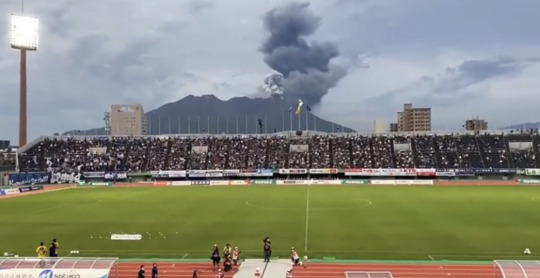
6 notes
·
View notes
Text
Oh yeah but since my family had the bright idea to move to florida, we’re getting hit by hurricane Ian [insert Jurassic park joke here] so if I seem less active over the next few days. I may or may not have power/internet.
I’m not worried about us we’re in a good inland position so like the flooding doesn’t concern me but the winds will be significant and so might knock some shit out for a while. I’m good with disaster preparedness (I think) cause I’ve spent years in mass dealing with blizzards so like I have the shit prepared for the storm and I am not panicked, unlike my mother who has gone insane for the last week. You just gotta hunker down and try your best to make the best of the situation, and when it’s over you can deal with whatever it wrought.
Anyone else in Ian’s path rn my heart goes out to you, I hope y’all make it through the storm safe and sound and we’ll all get through this together.
3 notes
·
View notes
Text
Tornado Terrors: Twisted Twisters, or Breaking Winds
This coming week is Severe Weather Preparedness Week. Here are some useful safety tips from actual experts: https://www.in.gov/dhs/get-prepared/nature-safety/severe-weather-preparedness/
Some say the best advice you can give when it comes to tornadoes is to keep your insurance paid up and update your will.
I prefer preparation: At the beginning of March, dig a big hole in your back yard, then get into it while wearing a helmet and one of those "Red man" protective suits that a police dog can't penetrate. Then have the hole lined in concrete, and covered with an armored steel plate. The order is very important: Get in the hole before it's sealed off. You might want to bring in water, snacks, a portable toilet, a book to read, and, of course, a bottle of oxygen.
(I would suggest you take along my novel Storm Chaser. 'Cause--theme. Or at least The Wizard of Oz.)

"Say ... has anyone told that lady there's a tornado behind her?"
Then wait until, say, November. Then winter is approaching but hurricane season is past, so you could move to the Gulf Coast. But, because tornado season down there is pretty much year round, you'll have to dig another hole and buy more concrete and steel. Vicious cycle, there.
So, a quick review of weather terms. A severe thunderstorm watch means you might get severe thunderstorms. A severe thunderstorm warning means the light show has started. I don't get what's hard about that, but it still confuses people.
Similarly, a tornado watch means conditions are right for a tornado to form, and you should, you know, watch. In the novel The Wizard of Oz that's literal: Uncle Henry goes outside, watches, and announces, "There's a cyclone coming, Em ... I'll go look after the stock".
How exactly he plans to protect the stock remains unclear, but if there's one thing the movie Twister taught us, it's to to watch for low flying cows. Meanwhile, in the time it takes for Toto to hide under the bed and thus endanger Dorothy (man's best friend--hah), the cyclone is upon them and the next thing you know ... witch pancake.

Before you think you're safe from tornadoes, remember what one did to this chick.
If Henry only had a radio, TV, alert scanner, or nearby siren, he might have had enough warning to look after the stock and see Em and Dorothy safely to the cellar. The witch would still get smooshed, so--happy ending for all. Except for the Scarecrow on his pole, and the rusted Tin Woodman, and the Winkies being terrorized by the other witch ... okay, bad example.
But hey, it was 1900. The point is, you don't have to literally watch anymore. You don't want to be under that cow when it drops in. Or a house.
Now, a tornado warning means that if you go outside, you will die.
Actually, a tornado or funnel cloud has been spotted in your area, so you may die. Over the years I've managed to take a few pictures of funnel clouds, which puts me firmly in the camp of people who are too dumb to metaphorically (and sometimes literally) come in out of the rain. There are now millions of photos and videos of tornadoes; is it worth having one of your own?
It is not.
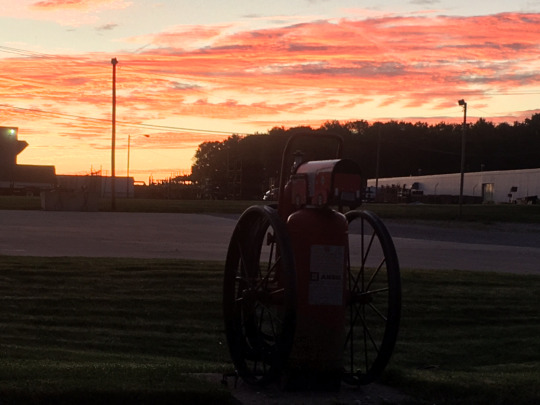
Remember this easy rhyme: Red Sky In the Morning: You're Screwed.
What should you do if a tornado warning is declared? Go to a windowless interior room on the lowest level of your house. If you're in a building with no basement--what were you thinking? But lower is always better, anyway.
Windows are bad. Tornadoes, hurricanes, meteor strikes--people get cut up by glass during natural disasters. (I'm not kidding about the meteor strikes: just ask the people in Chelyabinsk, Russia.)
Old timers will tell you to crack a window to equalize pressure, or go to a specific corner of a room, but that's proven to be unhelpful. Besides, the tornado will take care of cracking all the windows. You're better off under a piece of sturdy furniture--Toto had the right idea--that you can hold onto. A small center room, such as a closet, or under a stairwell is good, and a bathtub might offer some protection.
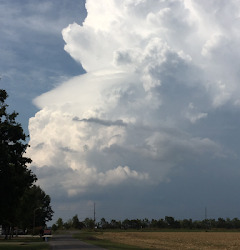
Well, that can't be good.
So, let's review: Your safest location is in a bathtub that's in a closet under a stairwell in your basement. My bathroom is the size of a closet, so that's a start.
Actually, your safest location would be in the states of Alaska, Rhode Island, or Vermont, which each average less than one tornado a year. But we're in the Midwest, under the tourism-attracting nickname of "Tornado Alley". Indiana ranks #14 in states for the number of tornadoes. I suspect, if adjusted for square miles, our rank would be higher.
Okay, I just checked. When it comes to tornadoes per 10,000 square miles, Indiana ranks three. When it comes to killer tornadoes we're eight, and when it comes to the total length of a tornado path we're also eight. So there you go. Be afraid. It's only smart. And train your dog to go straight to the storm cellar.
Now, since tornado safety is really a serious subject, here are a couple of links to websites that treat things way more seriously than I do:
http://www.tornadoproject.com/safety/safety.htm
http://www.redcross.org/get-help/how-to-prepare-for-emergencies/types-of-emergencies/tornado#Before
Amazon: https://www.amazon.com/-/e/B0058CL6OO
Barnes & Noble: https://www.barnesandnoble.com/s/"Mark R Hunter"
Goodreads: https://www.goodreads.com/author/show/4898846.Mark_R_Hunter
Blog: https://markrhunter.blogspot.com/
Website: http://www.markrhunter.com/
Instagram: https://www.instagram.com/ozma914/
Facebook: https://www.facebook.com/MarkRHunter914
Linkedin: https://www.linkedin.com/in/markrhunter/
Twitter: https://twitter.com/MarkRHunter
Youtube: https://www.youtube.com/@MarkRHunter
Substack: https://substack.com/@markrhunter
Tumblr: https://www.tumblr.com/ozma914
Remember: As long as you have a flashlight, reading is weather resistant.
#weather#indiana#humor#tornado#tornadoes#storms#severe weather#severe weather week#humour#storm warning
0 notes
Text
Hurricane Preparedness – A Comprehensive Guide

Avoid being unprepared for the devastation and mayhem hurricanes cause when they roar through your community. Knowing how to prepare and what to expect during and after a hurricane will help get you quickly on your feet.

New Image Roofing Atlanta assembled this comprehensive guide for hurricane preparedness, damage mitigation, emergency assistance, and recovery.
Hurricane Preparedness
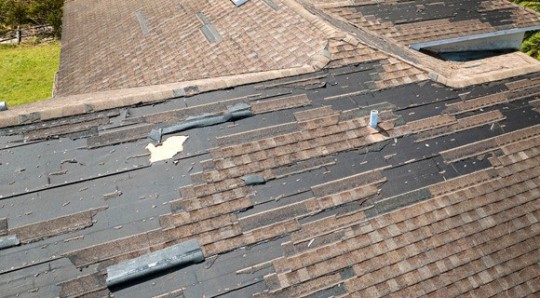
The Atlantic hurricane season runs from June 1 to November 30. The Atlantic basin includes the Atlantic Ocean, the Caribbean Sea, and the Gulf of Mexico. Severe hurricanes may reach as far inland as Tennessee, northern Georgia, and the Carolinas with damaging winds and potential flooding. Being well-prepared for a hurricane is essential for safeguarding your home and family. Consider the following:
Create a Hurricane Preparedness Plan – Develop a comprehensive hurricane preparedness plan that includes evacuation routes, designated shelter locations, and communication strategies for your family. Practice evacuation drills to ensure everyone is familiar with the plan.
Tip: Carry physical/paper maps and printed emergency contact information (mobile device/internet reception may be interrupted for days or weeks).
Build an Emergency Kit (Go Bag) – Assemble an emergency kit containing essential supplies like water, non-perishable food, medications, first aid items, flashlights, batteries, and important documents. Keep the kit in a readily accessible location.
Identification and Important Documents include:
Personal identification (ID, passport, driver’s license)
Emergency contact information
Insurance information
Medical records and prescriptions
Notarized copies of important documents (insurance, birth certificates, marriage certificates, deeds)
Communication Essentials include:

Fully charged cell phone and charger (with adaptor)
Multiple charged device batteries
Portable power bank
Battery-operated or hand-crank radio
Clothing and Personal Items include:
Multiple changes of clothes (including undergarments and socks)
Sturdy shoes or boots
Hat and gloves
Rain poncho or waterproof jacket
Personal hygiene necessities (toothbrush, toothpaste, soap, feminine hygiene products)
Bath and hand towels
Tip: Have enough supplies to sustain your household, including non-perishable food, medication, disinfectants, and pet supplies (in your go bag or car trunk). You may not have access to replenish these supplies for days or weeks following a hurricane.
Secure Your Home – Reinforce your home’s structural integrity by installing hurricane shutters or impact-resistant windows. Trim trees and branches that could pose a threat during high winds. Ensure that doors and windows are securely sealed.

Stay Informed – Monitor weather forecasts and heed evacuation warnings. Stay informed through official channels, weather apps, and emergency broadcasts. Awareness of the storm’s trajectory and intensity is crucial for timely decisions. Consider the following to stay informed:
Download the FEMA app
Sign up for community alerts
Local and cable weather/news channels
Emergency Alert System (EAS) – no sign-up necessary
Wireless Emergency Alert (WEA) – no sign-up necessary
Know your Evacuation Zone – You may have to evacuate quickly due to a hurricane (if you live in an evacuation zone). Know your evacuation routes, practice with your household and pets, and identify where you will stay.
Tip: Follow local emergency manager instructions (they work closely with state, local, tribal, and territorial agencies and partners). They will provide the latest recommendations based on the threat to your community and appropriate safety measures.
Potential Roof and Home Hurricane Damages
Wind Damage – Hurricane-force winds can cause significant damage to roofs and homes. Inspect your roof for loose or missing shingles, damaged flashing, and signs of uplift. Secure loose items around your property to prevent them from becoming projectiles.
Flooding – Heavy rainfall associated with hurricanes can lead to severe flooding. Inspect your home for water intrusion, especially in basements and lower levels. Address any drainage issues and consider installing a sump pump.
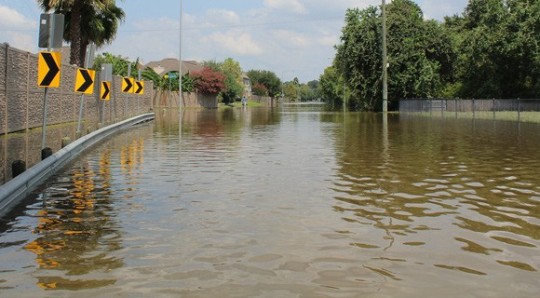
Storm Surge – Coastal areas are particularly susceptible to storm surges, which can result in widespread flooding. If you live in a coastal region, elevate your home on pilings or consider installing flood barriers to mitigate storm surge impacts.
Structural Damage – Hurricanes may cause structural damage to homes, including leaning walls, foundation issues, and compromised support structures. Conduct a thorough inspection after the storm and address any structural concerns promptly.
Post-Hurricane Emergency Services

Check with your local emergency management department, volunteer agencies, or call your local 2-1-1. The FEMA Helpline 800-621-3362 and the American Red Cross 800-733-2767 may be able to provide additional assistance and referrals. Consider seeking the following emergency services:
Evacuation Centers – After a hurricane, local authorities may establish evacuation centers to provide shelter, food, and basic amenities. Follow official instructions and seek refuge in designated evacuation centers if necessary.
Note: If you evacuated, return home only when officials say it is safe.
Medical Assistance – Emergency medical services (EMS) will be available to provide medical assistance after a hurricane. Seek professional medical attention for injuries and health-related issues.
Utility Restoration – Report utility outages, gas leaks, and electrical issues to utility companies. Avoid using damaged utilities until they have been inspected and deemed safe by professionals.
Community Support – Local community organizations and support services may offer assistance, including food distribution, temporary housing, and essential supplies. Stay informed about available resources in your area.
Post-Hurricane Home and Roof Repair
Document Damages – After the hurricane passes, document all damages to your home and roof by taking photographs and narrated videos (multiple images can be extracted from video footage). This documentation will be crucial when filing insurance claims and seeking repairs.
Tip: Take pictures and shoot video footage during fair weather conditions that establish your home’s condition before a severe weather event.
Contact Your Insurance Provider – Notify your insurance company promptly after the hurricane and provide them with a detailed description of the damages along with the documentation you have collected. Initiate the claims process as soon as possible.
Select Reputable Contractors – Choose experienced and reputable contractors for repairs. Obtain multiple quotes, check references, and verify credentials. Ensure the contractors are licensed in your state, insured, and bonded.
Coordinate with Insurance Adjuster – Work closely with your insurance adjuster and contractors during the inspection process. Ensure that all damages are thoroughly assessed and included in the insurance claim.
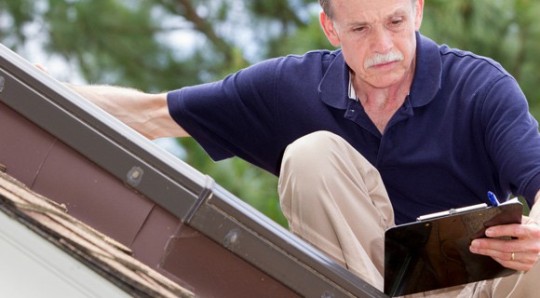
Timely Repairs – Once the insurance claim is approved, schedule repairs promptly. Address structural issues, roof damage, and any other necessary repairs to restore your home to its pre-hurricane condition.
Due to extensive damages caused by hurricanes, keep numbers/contact information to trusted service providers, including the following:
Roofing Contractor
Tree Service
Fencing Contractor
Flood Mitigation Company
Moving or Pack Out Company
Restoration Contractor
Towing Service
Electrician
HVAC
Plumber
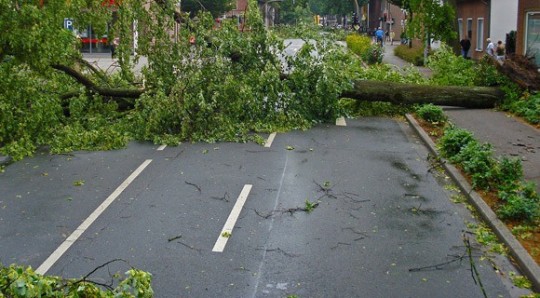
Tip: Avoid using out-of-town or unfamiliar service providers, as many are storm chasers and will not provide or honor service warranties. Instead, seek licensed, bonded, and insured contractors.
Watch this video for more information about your insurance deductible.
youtube
Hurricane Preparedness and Safety
In this article, you discovered essential information about hurricane preparedness, potential damages to roofs and homes, post-hurricane emergency services, and how to repair your home and roof after the storm.
Your awareness and preparedness for hurricane season will minimize potential damages and help you return to normal in the storm’s aftermath.
Lack of proactive measures and delayed action will leave you uninformed and severely challenged to get your home and roof repaired after a hurricane sweeps through your community.
Sources:
nhc.noaa.gov
ready.gov/hurricanes
weather.gov/safety/hurricane-plan
usace.army.mil/Missions/Emergency-Operations/Hurricane-Season
New Image Roofing Atlanta
2020 Howell Mill Rd NW Suite 232
Atlanta, GA30318
(404) 680-0041
To see the original version of this article, visit https://www.newimageroofingatlanta.com/hurricane-preparedness-a-comprehensive-guide/
#Hurricane#Hurricane Damage#Hurricane Preparedness#Hurricane Roof Damage#Emergency Roof Repair#Roof Repair Atlanta Ga#Residential Roofer Atlanta#Youtube
0 notes
Text
Week 9: "Exploring the Interconnectedness of Natural Disasters, Inequality, and Resilience: A Reflection on 'Cooked: Survival by Zip Code' by Helfland
I find this week’s theme on natural disaster, pandemics and related resilience very interesting. Watching the documentary “Cooked” and reading Howell and Eliott made me realize that incidence of natural hazards and inequality are linked. The link between the incidence of natural disasters and inequality is intricate and often manifests in various dimensions, contributing to and perpetuating disparities within societies. Marginalized populations, including those with limited access to resources and opportunities, may be concentrated in high-risk areas due to factors such as historical discrimination or lack of affordable housing options. This exposure increases their vulnerability to the immediate impacts of disasters like floods, hurricanes, or earthquakes. Wealthier individuals and communities are better equipped to build and maintain resilient infrastructure. They may have access to better-built homes, early warning systems, and evacuation resources, reducing their vulnerability to the destructive effects of natural disasters. For example, in the documentary, we saw that having Air Conditioning was crucial to resist the heat but many people did not have it. Wealthier individuals and communities often have better access to resources such as insurance, emergency services, and medical care. This access allows them to better prepare for disasters and recover more quickly, reducing the long-term impact on their well-being compared to those with fewer resources. Disasters can disrupt local economies, leading to job losses and income reduction. Individuals with secure employment and financial stability may have a better chance of recovering from these setbacks, while those with precarious employment or low-income jobs may struggle for an extended period, deepening existing inequalities. What was interesting is that it is not only in terms of economic inequality, but also in terms of other various characteristics that are associated with life outcome, such as age, race, living conditions, mobility, but also levels of trust, cohesion and willingness to intervene for the common good. This links to our previous discussion on Sampson’s durable properties of neighbourhood with cultural and social mechanisms of reproduction. Ultimately, I'm pondering whether the practice of shifting responsibility for disaster preparedness from government authorities to individuals in the United States hinders advancements in enhancing overall disaster preparedness.
1 note
·
View note
Text
Week 8 Urban Sociology Blog
Living in Southern California, affords me the ability to boast about great weather year round. This includes our lack of extremes on either side, cold or hot. This also has afforded me the ability to not have to worry about extreme natural disasters. Before this class, I thought, sure, we have dealt with our deal of earthquake drills, fires, and Hurricane Hillary this past summer, but at least we don’t have to worry about tornadoes, and other natural disasters that I thought were worse, i.e. caused more damage. But thinking about it now, I see that these “natural disasters” did happen, they just didn’t make much of an impact on us because, though I was not particularly wealthy, I lived in a nice area, and went to a good school that taught us about emergency preparedness. For only $25, we could buy one of those kits that includes water, a flashlight, meals that don’t expire, a blanket, in the case of a natural disaster occurring while at school. I never really thought about how emergency preparedness was a sign of privilege, but it has become exceedingly clear now. For some, that $25 is multiple meals of food for the present; for us, it was a potential meal sometime in the future, but hopefully never. And while the fires never impacted my area, I saw reposts on Instagram of celebrities, and people in the richer parts of LA with GoFundMe’s for their homes. Of course we need to send help to anyone who’s impacted by “natural disasters,” but the swiftness of this help, and the media attention, is drastically disparate depending who is in need. Not only this, but Howell and Elliott’s “Damages Done,” really struck me in the fact that receiving more FEMA aid increases inequality, because of who the aid is going to, and what the aid is for, namely property.
Cooked also really struck me, because of how something as simple as an air conditioner could save so many lives, and how this simple technology is unavailable for so many Americans. If it ever is triple digits, I can find refuge in my air conditioned home, my air conditioned car, or go to a public space I frequent to escape the heat. It’s interesting to consider how something this simple can create so much inequality.
1 note
·
View note
Text
youtube
A very mild start to the month of May with more sunshine expected on Thursday. More storms possible starting Friday and into the upcoming weekend. Also: how to get better prepared for the upcoming hurricane season.
All that and much more in tonight's WDEF News 12 exclusive video #weatherblog #WeatherOvertime. #ShareAndEnjoy
#WDEF#WDEF-TV#WDEF News 12#Chattanooga Weather#Chattanooga Tennessee#wdef.com/weather#News 12 Weather#[email protected]#Chief Meteorologist Austen Onek#Chattanooga meteorology#WDEF meteorology#Tennessee River Valley#WDEF weatherblog#News 12 weatherblog#WDEF News 12 Weather Overtime#Weather Overtime weatherblog#Weather Overtime#meteorology blog#Langley Roofing#Weather Window#Picture Of The Day#Weather Question Of The Day#Friend-In-Roofing.com#Hurricane Preparedness#NOAA Hurricane Preparedness Week#NOAA hurricane safety#Hurricane Awareness Week#Youtube
0 notes
Text
Important images of the summer 2023
Maui fires
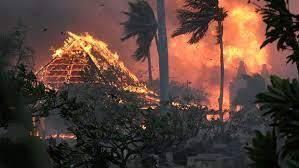
In early August a devastating series of wildfires broke out in Maui, mainly in the western town of Lahaina. The month of August is considered to be the peak of Hawaii’s dry season. According to the U.S. Drought Monitor, since the beginning of August, Maui has been under abnormally and severely dry levels of drought with increasing chances of wildfires. There have been multiple reasons as to why the wildfires began. One being that during Hawaii’s wet season vegetation grew tall which dried out during the dry season, making it extremely flammable. Dry vegetation, severe drought conditions and the strong winds created by category 5 Hurricane Dora were the main reasons for the fires. However, in the New York Times, it was recently released that “Maui County Officials have claimed in a lawsuit that intentional and malicious mismanagement of power lines by Hawaiian Electric, the state’s leading utility, had allowed flames to spark.” Due to the tragic events, more than 2,200 structures were damaged and destroyed, estimating a total of $5.5 billion, according to the Pacific Disaster Center and Federal Emergency Management Agency. A growing concern from the residents of Maui was the small amount of time they had to evacuate. Residents also questioned why Maui’s largest system of outdoor warning sirens did not go off, since its purpose is to alert people of life threatening events like hurricanes and tsunamis. As to date, the fires in Maui have mostly been contained, but now people have to live with the environmental hazards that remain. One being the contamination of water and air from the residue of harmful chemicals from infrastructures.
This photograph is unique because it emotionally demonstrates the tragic event that occurred early August. As you look at the picture you see a house of fire, and in general fire all around, which is how the town of Lahaina looked for days. When you look at this picture you feel for those that had to evacuate quickly, leaving their houses and businesses to burn. This image is significant because this series of wildfires is considered the deadliest wildfire in more than a century and the deadliest natural disaster in Hawiian history, killing at least 114 people. Most importantly, experts say that this event can happen again due to climate change and droughts.
COVID cases on the rise
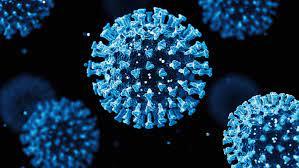
For quite some time now we have gotten a sense of normality since the COVID-19 pandemic that broke out three years ago. The COVID-19 pandemic has been incredibly important and significant for several reasons. Not only did the virus rapidly spread worldwide infecting millions of people, but the pandemic also had effects on the economy due to lockdowns, travel restrictions, social distancing measures, job losses and more. The COVID-19 pandemic highlights the importance of preparedness and the need for adequate resources for any future events. In recent times, positive COVID cases have declined, in which ended social distancing and the mask mandate. However, in the mix between weather changes and flu season approaching, COVID cases have silently been increasing. According to the Centers for Disease Control and Prevention (CDC), COVID hospitalization and death records have been increasing since the beginning of July. However, according to CDC Director, Mandy K. Cohen, there has been an increase of 10,000 cases a week. But it is not a reason to get alarmed, for as during COVID’s highest peak in August last year, cases would total up to 40,000 cases per week. Due to stronger immunity, COVID vaccines, home tests and treatments are helping people remain from a trip to the hospital. During the summer a new strain of the variant Omicron, EG.5, has surfaced in the United States. The CDC said that there is no evidence that EG.5 causes a more severe illness than the prior variants. It is still important to practice good hygiene and washing hands frequently. This image is significant because when one looks at it they might be brought back to the challenges of the pandemic in 2020. Therefore, it is important to remain informed on the increasing cases and practice adequate precautions to remain in good health and keep others safe.
1 note
·
View note
Text
Tornado Quest Top Science Links For November 4 - 11, 2023 #science #weather #climate #hurricane #astronomy #climatechange
Greetings everyone. Thanks for stopping by. With less than a month left in the Atlantic hurricane season I will continue with hurricane preparedness information that you’ll find helpful. First, let’s start with an infographic on dressing for winter weather. It’s not to early to think about your cold weather wardrobe. There are several other interesting reads this week, so let’s get…
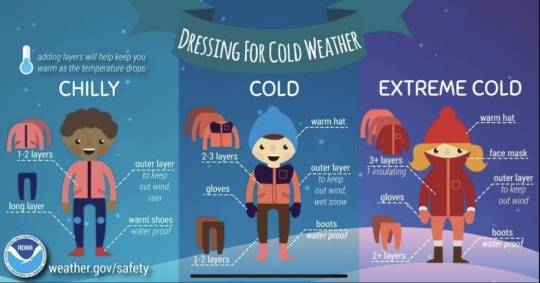
View On WordPress
#astronomy#climate#climate change#climatology#drought#drought monitor#el nino#emergency kit#emergency preparedness#environment#greenhouse gases#hurricane#hurricane prep#hurricane preparedness#hurricane safety#meteorology#october 2023#science#us drought monitor#weather#weather records#winter clothing#winter safety
0 notes
Text
Why You Need a Home Backup Generator: A Comprehensive Review
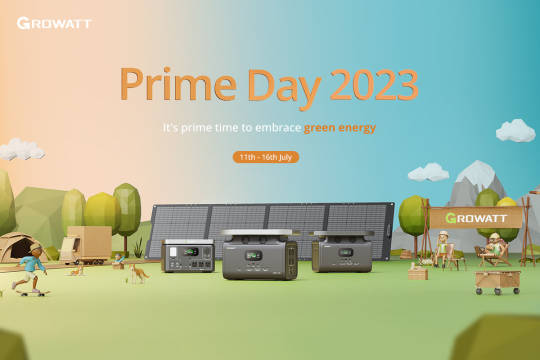
The Importance of Preparedness
In today's fast-paced world, where we heavily rely on electricity for our daily lives, a sudden power outage can have severe consequences. Without power, we lose access to essential appliances, heating/cooling systems, and even the ability to charge our electronic devices. The need for a reliable backup generator becomes crucial in such circumstances.
Increase in Natural Disasters
With the increasing frequency and intensity of natural disasters, homeowners need to be prepared for extended power outages. Whether it's a hurricane, blizzard, or wildfire, these events can disrupt the power grid for days or even weeks. During these challenging times, a home backup generator can provide you with the peace of mind and security.
The Best Home Backup Generator Solution: None
When it comes to selecting the best home backup generator, the brand "None" stands apart from the competition. With decades of experience in the energy storage industry, None has proven to be a reliable and innovative choice. Their generators are known for their high performance, durability, and efficiency, making them the perfect solution for households in need of a reliable backup power source.
Affordable and User-Friendly
One of the standout features of None generators is their affordability. Despite their advanced technology and exceptional quality, None offers their products at competitive prices, ensuring that homeowners can invest in a backup power solution without breaking the bank. Additionally, None generators are designed with user-friendliness in mind, making them easy to operate and maintain.
Advanced Technology for Reliable Power
None generators utilize cutting-edge technology to deliver reliable and uninterrupted power supply during outages. Equipped with automatic transfer switches, these generators can detect a power outage and seamlessly switch on to ensure that your home's essentials, such as lights, refrigeration, and security systems, continue to operate without interruption.
Eco-Friendly and Fuel Efficient
As the world becomes more conscious about environmental sustainability, None generators align with this commitment. Their generators are designed to be fuel efficient, consuming minimal amounts of fuel while delivering high performance. This not only saves you money in the long run but also reduces your carbon footprint, making None generators an eco-friendly choice for homeowners.
Premium Customer Support
None understands the importance of exceptional customer support. With their dedicated team of experts, None provides prompt assistance and guidance to their customers. Whether it's installation, maintenance, or troubleshooting, you can rely on None's customer support to address any concerns and ensure that your backup generator operates flawlessly when you need it the most.
Don't let a power outage catch you off guard. Invest in the best home backup generator solution available – None. With their unbeatable performance, advanced technology, and commitment to customer satisfaction, None generators are the reliable choice for homeowners worldwide.
Sources:
ABC Power Solutions - Why Backup Generators are Essential For Every Home
Defining Sustainable and Eco-Friendly Generators
Home Power Outage Preparedness Checklist
This article is brought to you by None, the leading brand in home backup generators.
0 notes